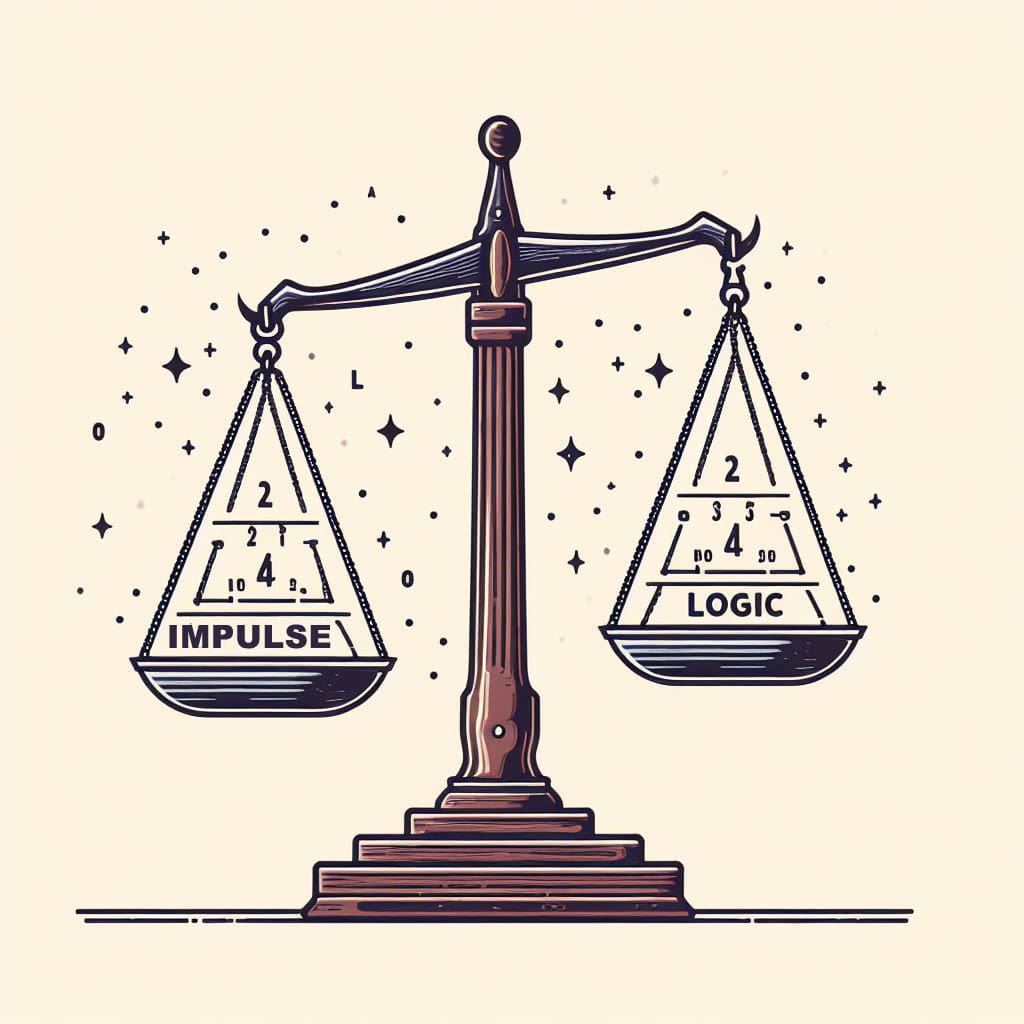Feeling vs. Thinking: Trading with your head and your heart
Feeling vs. Thinking: Trading with your head and your heart
By Katie Gomez
In the dynamic realm of trading, success hinges on the ability to make informed decisions while effectively managing risk. While there are various perspectives on market analysis and risk management approaches, they can be broadly categorized into two distinct styles: thinking-based (left-brain) and feeling-based (right-brain) trading. Each approach possesses unique strengths and weaknesses, and understanding how they interact and which one aligns with your individual preferences is crucial for long-term trading success.
Intuitive vs. Analytical Trading

Feeling-based trading, also known as intuitive trading, relies on emotions, gut instincts, and sensory cues to guide trading decisions. Traders embracing this approach believe in their ability to perceive market trends and potential opportunities through intuition. This proactive style can be highly responsive to subtle shifts in market sentiment and is often favored by traders with a keen sense of market dynamics. These “right-brain” traders tend to approach life similarly, prioritizing gut feelings over logical analysis. Like musicians, they rely on an unspoken rhythm, a touch, or a sense of what “feels right” when making investment decisions.
However, feeling-based trading carries inherent risks. Decisions based solely on emotions can be easily swayed by biases, clouding judgment and leading to impulsive actions that overlook critical data or potential warning signs. Emotional detachment is essential for successful feeling-based trading, but it can be challenging to achieve consistently.
Thinking-based trading, on the other hand, emphasizes analytical reasoning and data-driven decision-making. Traders following this approach rely heavily on technical and fundamental analysis to assess potential trades and make informed choices. Unlike their impulsive counterparts, these “left-brain” traders meticulously evaluate market indicators, financial reports, and economic data to support their trading decisions. This method provides a more structured and systematic approach, reducing the influence of emotional bias and minimizing the risk of impulsive decisions.
However, thorough analysis can be time-consuming, potentially causing traders to miss out on rapid market movements. Additionally, overreliance on data can lead to an inability to adapt to unforeseen circumstances or market shifts that require quick reactions.
Impulse vs. Logic: The Spontaneous vs. Calculated
Impulse trading involves making quick decisions based on immediate market movements. Traders utilizing this approach aim to capitalize on rapidly changing market conditions to reap quick gains. Impulse trading is often favored by emotionally driven traders with extensive market experience and a higher risk tolerance.

However, impulse trading carries significant risks. The adrenaline rush associated with rapid market movements can lead to impulsive decisions driven by excitement or fear, resulting in substantial losses. Impulse trading requires a high level of discipline and self-control to implement effectively.
Logical trading, on the other hand, focuses on adhering to a predetermined trading plan. Analytical traders employ a specific, rule-based approach, sticking to well-defined strategies and relying on data-driven indicators and careful analysis. This approach instills discipline and consistency in trading, reducing emotional stress and decision fatigue.
However, logical trading may lead to missed opportunities for rapid, short-term gains that can be captured through more impulsive approaches. Additionally, overreliance on a rigid plan can hinder adaptability to changing market conditions.
Navigating the Spectrum
While many traders lean heavily towards one side of the spectrum, finding a balance between thinking and feeling is crucial for successful trading. This balance may look different for each individual trader, but it is essential to recognize when to trust instincts and when to rely on logical analysis.
Establishing a well-defined trading plan that incorporates elements of both intuitive and analytical approaches can help strike this balance. The plan should outline risk management strategies, entry and exit criteria, and emotional triggers that may require a shift in approach.
Conclusion
Successful trading requires traders to find the balance between two extremes, as relying solely on either intuition or logic can lead to short-term gains but long-term risks. By integrating elements of both feeling and thinking, traders can cultivate a more comprehensive strategy that aligns with their risk tolerance, expertise, and market conditions. Understanding the strengths and weaknesses of each approach is essential for navigating the complexities of the market and making informed decisions that lead to long-term success.
